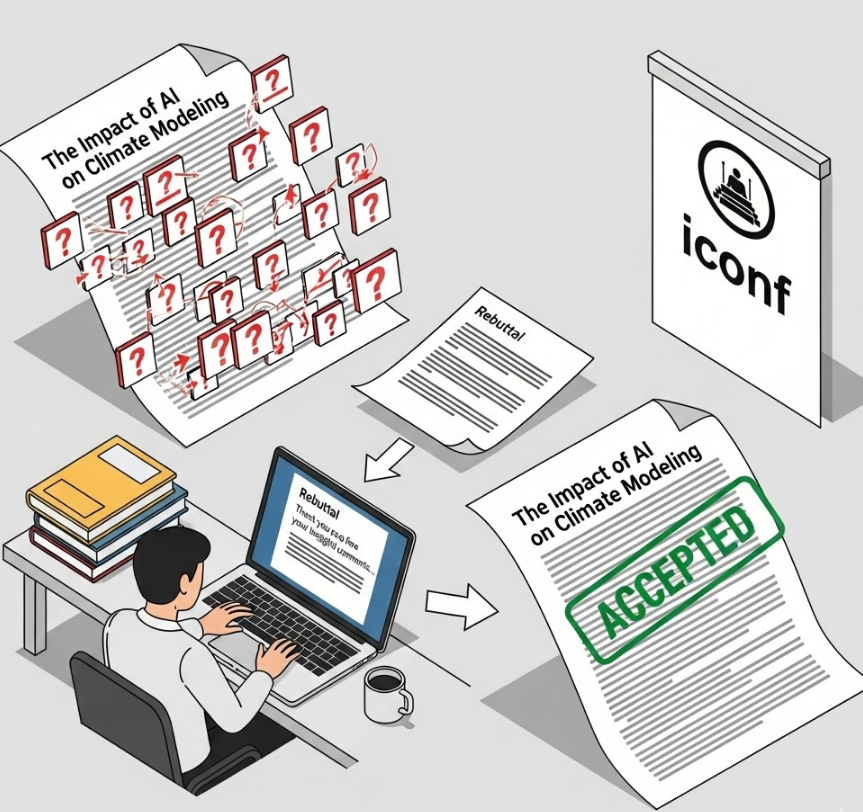

213 views||Release time: Oct 28, 2025
Receiving reviewer comments, especially critical ones, can be discouraging. However, the rebuttal phase (common in many top-tier conferences) is not a fight; it's an opportunity. It is your chance to directly address misunderstandings, correct flaws, and convince the program committee that your paper is a valuable contribution.
A well-written rebuttal can be the deciding factor between acceptance and rejection. This guide provides a clear structure and professional strategies for crafting a persuasive response.

Before you type a single word, adopt the right mindset. The reviewers are not your enemies; they are volunteers (and often over-committed) who are providing free feedback to improve your work and the conference's quality.
Rule 1: Be Grateful and Professional: Always begin by thanking the reviewers for their time and insightful comments, even if the comments are harsh or misguided.
Rule 2: Be Constructive, Not Defensive: Your goal is to show you are an objective researcher who welcomes feedback to improve your paper. Avoid any language that sounds sarcastic, dismissive, or argumentative.
Rule 3: Be Clear and Concise: Rebuttals are almost always length-limited (e.g., 500 words or one page). Do not waste space on long-winded apologies. Be direct and specific.
The best format is a structured, point-by-point response. This makes it easy for the Area Chair (AC) or Senior Reviewer to see that you have addressed every concern.
Begin with a brief introductory paragraph. Thank the reviewers collectively and summarize the main changes you have made (or will make).
Example: "We sincerely thank the reviewers for their detailed feedback and constructive suggestions, which have helped us strengthen our paper. We have addressed all concerns, including [Main Change 1, e.g., conducting a new experiment] and [Main Change 2, e.g., clarifying our theoretical claims in Section 3]."
List each reviewer (e.g., Reviewer 1, Reviewer 2, R1, R2) and then address their comments one by one.
Good Structure:
[Reviewer 1, Point 1]: [Briefly restate the reviewer's concern, e.g., "R1 was concerned about the lack of comparison with Baseline X."]
[Your Response]: "We agree this is an important comparison. We have now run a new experiment comparing our method to Baseline X and added the results to Table 2 (Page 7). The results show..."
Make the reviewers' lives easier. Guide them directly to your changes.
Good: "We have revised this in Section 4.1 (Page 5, Lines 120-125)."
Bad: "We have fixed this in the paper."
Your response will vary depending on the comment.
This is the best-case scenario. Example: "We thank the reviewer for this excellent suggestion. We have revised the introduction to better motivate the problem, as suggested (Page 2, Paragraph 1)."
This is your fault, not theirs. It means your writing was unclear. Example: "We apologize for the lack of clarity. Our original paper intended to [explain X]. We have revised Section 3.2 (Page 4) to make this point explicit and avoid any misunderstanding."
You must handle this with extreme care and provide evidence. Example: "We appreciate the reviewer's suggestion to use [Method Y]. However, our work focuses on [low-power environments], where [Method Y] is computationally prohibitive (as shown in [Cite Paper Z]). Therefore, we believe our choice of [Method A] is better suited to the specific problem scope. We have added a sentence to the 'Limitations' section to discuss this trade-off."
Be polite and correct them with evidence, as if it were a misunderstanding. Example: "We believe there may be a misunderstanding regarding the reviewer's comment on [X]. Our paper does, in fact, include this analysis in Figure 3 (Page 6). To make this more prominent, we have added a stronger reference to this figure in the main text."
The entire rebuttal phase, while stressful, is a hallmark of a high-quality academic conference. It indicates a commitment to rigorous peer review and scholarly dialogue.
This structured process relies on a robust backend. When a conference uses a professional management platform, such as www.iconf.com, it helps facilitate this complex dialogue. Such systems are designed to ensure that reviewer comments are delivered clearly, author rebuttals are collected efficiently, and the entire discussion is transparently available to the Area Chairs and Program Chairs who make the final decisions.
Before you hit "submit," ask yourself:
[ ] Is my tone 100% professional and grateful?
[ ] Did I address every single point from every reviewer?
[ ] Did I clearly separate my responses to each point?
[ ] Where I made changes, did I point to the exact location (page, line, figure) in the revised paper?
[ ] Where I disagreed, did I provide clear, evidence-D arguments?
[ ] Is the rebuttal free of typos?
A strong rebuttal demonstrates that you are a careful, thorough, and collaborative researcher—exactly the kind of author program committees want to include in their conference.